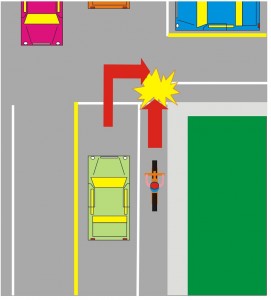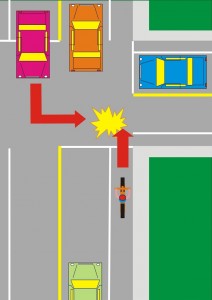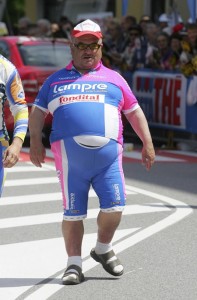I managed to survive Bike-to-Work Week, despite the actions of one idiot and the reality that my schedule did not allow me to ride my bike to work even as many days as I did the week before or the week after. In honour of Bike Month, I want to talk about the most persistent threats to cyclists on the road.
Although I had a run-in with an idiot who seemed to be offended by my presence on a bike, I need to emphasize this is a real anomaly. I cannot remember the last time I had a deliberate assault like that in Canada.
I lived in the MidWest of the United States for a couple of years, and when riding my road bike on country roads through corn and soybean fields, having someone brush you off (speed by so close it causes you swerve towards the ditch by reflex), or throw a beer can at you while yelling “fag!” was not that uncommon. I’d put it at less than once a week, more than once a month, but maybe I have a really faggy peddling stroke.
Interesting aside: Budweiser is by far the preferred brand of beer amongst the type of people who throw cans at passing cyclists while yelling “fag”. You would think they would market that more.
Regardless, this type of aggressive behavior towards bikes is very rare, and I don’t see it as a real threat when riding my bike. At least these idiots see me, and acknowledge I am on the road. What is much more dangerous are the large number of people who don’t even see cyclists on the road. This commonly results in a two-punch attack to bicycle commuters that have come to be known as the Right Hook and the Left Hook.
The Right Hook occurs when a cyclist is riding along “as far right as practicable” as per the Motor Vehicle Act, commonly in the bike lane. As drivers pass by on the left, you note one slowing down just after they pass you. The car then pulls a right turn directly into you or directly in your path. A cyclist has virtually no defense. A faster car catches up to you, passes you, then cuts in front of you at an intersection or, even less predictably, at a driveway.
The Left Hook is when a car turns left into your path. The typical situation is when the cyclist is rolling along “as far right as practicable” as per the Motor Vehicle Act, maybe even in a bike lane, with a string of cars steaming by to your left. You roll into an intersection just as there is a gap in that string of cars, and an oncoming driver, who has been patiently waiting to turn left sees their gap and goes for the left turn, and either hits the cyclist, or the cyclist hits them.
In both cases, the cyclist does nothing wrong, riding in full compliance with the law, and has absolutely no defense, yet takes the brunt of the crash. With all the talk of cyclists running stop signs or weaving through traffic, or any of the other hundred behaviours that drivers criticize in cyclists (yet turn a blind eye when other car drivers do them), the majority of actual bike-and-car accidents are either a Right or a Left Hook. I had near-misses of both types on the same day during Bike To Work Week. This happens ALL THE TIME.
When the impact or near miss happens, the driver’s defense is universal: “I didn’t see you!”
Let me give you a tip, drivers. This is an admission of guilt, not a defense. This is the definition of driving without due care and attention. When I ride my bike in the City, I am dressed up like a freaking MardiGras Parade. If it is twilight or darker, I have more flashy lights and reflective surfaces than the last 5 minutes of Close Encounters of the Third Kind. Here is a picture of me back in my racing days…
If you did not see me, you were not driving with the attention or care due for a person operating a 3000-lb 200-HP piece of machinery in a public space.
This excuse is especially hollow when (as commonly happens) the person delivering the Right Hook actually accelerates to get in front of you before pulling the hook. You know they saw you, they know they saw you. What they are really saying is that they did not understand how to deal with you. People who don’t ride bikes in traffic (the majority of drivers) simply don’t know how they are supposed to interact with a bike in the right lane.
One approach that seems most unlikely is to slow down a bit and let the cyclist pass in front of you before you make the turn. This is likely because most drivers still see bicycles as faster pedestrians (“get on the sidewalk!”) and not a slow motor vehicle (as the Motor Vehicle Act chooses to define our role).
Active aggression towards bikes is really rare in Vancouver, despite Bruce Allen’s hysterical blathering; it is the passive misunderstanding of bike that is more deadly for people who use them.


